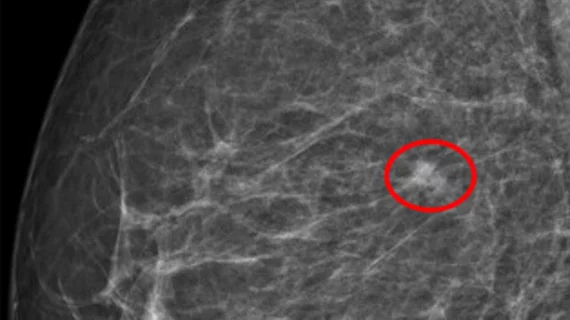Commercially available AI reduces radiologists' workload by 34% in certain screening settings
In breast cancer screening settings, use of artificial intelligence decision support software can reduce radiologists’ workloads by nearly 34%.
What’s more, it increases cancer detection rates and reduces false positives, according to new work published in the journal Radiology.
“In recent years, retrospective studies have indicated that employing artificial intelligence (AI) systems in screening may help alleviate the workload issues of radiologists while maintaining screening performance,” Andreas D. Lauritzen, PhD, a postdoctoral student at the University of Copenhagen and researcher at Gentofte Hospital in Denmark, and co-authors note. “Given this recent evidence and the increasing workload burden of radiologists, AI systems may be useful as supportive tools for stratifying screenings based on the probability of breast cancer, which has motivated the exploration of their use in population-based breast cancer screening.”
For the study, which was conducted among the eligible breast cancer screening population in Denmark, experts analyzed cancer detection, positive predictive value and recall rates before and after implementing a commercially available AI decision support system (Transpara). The software produced a risk score for each patient’s imaging, with scores under 5 representing exams that were “likely normal.”
At the institutions where the research was conducted, the standard approach is to have physicians double-read breast cancer screenings. After the AI system was implemented, only scores above 5 were double read by two human readers.
The group included 60,751 and 58,246 women that were screened before and after the system was introduced. Using the decision support tool, cancer detection rates improved from 70% to 82%, respectively. It was especially beneficial for spotting small cancers (less than 1 cm), increasing detection from 36.6% to 44.9%.
False positive rates dropped from 2.39% to 1.63%, while positive predictive value saw an 11% improvement. Combined, this resulted in a 20.5% reduction in recall rates and cut the number of exams requiring double reads by nearly 40,000 during the study period.
“Our findings indicate that using an artificial intelligence (AI) system in population-based mammography screening improved screening performance and reduced workload,” the group suggests.
Of note, the radiologists involved in the study had access to patients’ prior screenings, while the AI system did not. In the future, the team intends to study how this affects the performance of AI.

